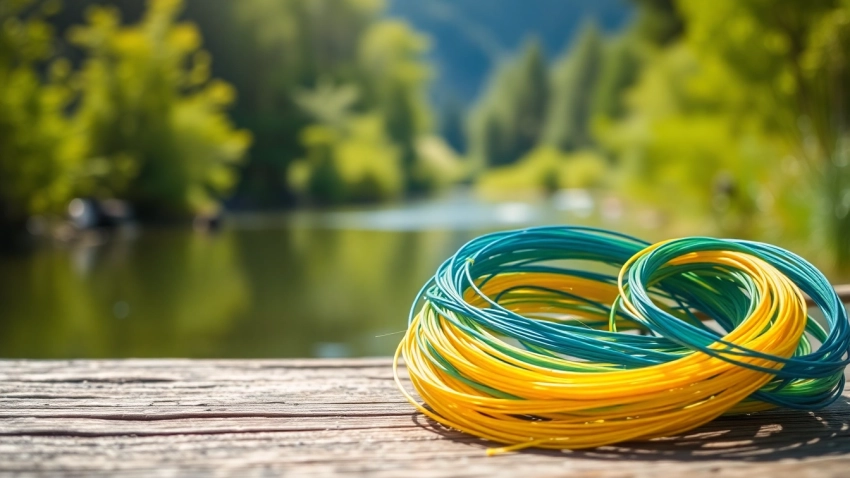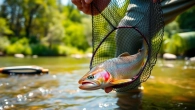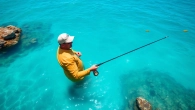
Choosing the Right Fly Fishing Line: A Comprehensive Guide
Introduction to Fly Fishing Line
Fly fishing stands as one of the most rewarding outdoor activities, engaging both the skill of casting and the art of nature observation. Central to this pursuit is the fly fishing line, an essential component that significantly influences the overall fishing experience. Understanding the nuances of fly fishing lines, including their types, weights, and maintenance, can enhance your success and enjoyment on the water. In this comprehensive guide, we delve into the world of fly fishing lines, ensuring that you have the necessary knowledge to make informed choices. Whether you are a beginner just starting or an experienced angler looking to enhance your gear setup, this article will provide vital insights into the best practices and technical aspects associated with Fly fishing line.
What is Fly Fishing Line?
At its core, the fly fishing line is the link between the angler and the fish. It is a specialized type of fishing line designed for casting artificial flies during the fly fishing process. Fly fishing lines come in a variety of formulations and designs, each tailored to different fishing scenarios and species. Unlike traditional fishing lines, which are often monofilament strands, fly fishing lines are typically thicker, heavier, and offer unique characteristics like buoyancy, tapering, and material composition.
Importance of Selecting the Right Line
The selection of the appropriate fly fishing line can dramatically affect your casting distance, accuracy, and the ability to present flies in a natural manner to fish. Using the wrong line can result in frustration; for example, a line that is too heavy may cause inaccurate casts, while one that is too light may fail to carry the fly sufficiently. Furthermore, different fishing conditions, such as wind, water type, and targeted fish species, necessitate distinct line characteristics. Effectively matching your fly fishing line to these variables can increase your chances of success on the water.
Overview of Different Types of Fly Fishing Lines
The broad category of fly fishing lines can be distilled into several types, each with its own specific use, taper design, and sink rate. Understanding the distinctions between these lines will help anglers select the best option for their fishing needs. These categories include weight forward lines, double taper lines, and specialty lines like sinking or floating options. Each type is engineered to tackle certain challenges faced by anglers, whether it’s casting in tight quarters or fishing at varying depths.
Understanding Fly Fishing Line Types
Weight Forward vs. Double Taper Lines
Weight forward (WF) lines feature a concentrated mass near the front of the line, facilitating distance casting with less effort. These lines are particularly effective for beginners or those fishing in windier conditions, allowing for smooth, efficient casting during quick setups. On the other hand, double taper (DT) lines have a symmetrical taper on both ends, which provides a delicate presentation of flies, making them ideal for dry fly fishing or when you need to roll cast into tight spots. While both lines have their merits, the choice ultimately depends on angler preference and the fishing scenario they encounter.
Floating, Sinking, and Intermediate Lines Explained
Fly fishing lines can be categorized by their buoyancy. Floating lines are the most commonly used line type; they simply stay on the surface of the water, making it easier to present dry flies. These lines are versatile and suitable for various fishing scenarios. Sinking lines, conversely, are designed to dive underwater and are ideal for targeting fish that inhabit deeper waters. They come in three variations—slow, medium, and fast sinking—allowing anglers to target different depths effectively. Lastly, intermediate lines float just below the surface, making them useful for subsurface presentations, especially in situations where fish are feeding just below the surface film.
Specialty Lines for Unique Fishing Conditions
Specialty lines serve specific functions that can elevate an angler’s performance in unique conditions. For example, nymphing lines are designed for fishing with weighted flies below the surface, while streamer lines accommodate larger, heavier flies. There are also lines created for specific environments, like saltwater lines’ durability against saltwater corrosion or specific standards for steelhead fishing. Leveraging these specialized lines can significantly improve your fishing efficacy and overall enjoyment while targeting particular species or fishing styles.
Choosing Your Fly Fishing Line Weight
How Weight Affects Casting Performance
The weight of your fly fishing line is crucial to its performance, as it directly impacts casting dynamics. Fly fishing lines are classified by weight, typically ranging from 1 to 14, where a higher number corresponds to heavier lines. Heavier lines allow for more extended casts and better wind resistance but can be challenging to control if not matched correctly with the rod’s specifications. Understanding the weight to use during specific conditions can help optimize your casting performance and ensure the successful presentation of your flies.
Matching Line Weight to Rod Specifications
It is vital to match your fly fishing line weight to the rod weight as specified by the manufacturer, which allows for optimal compatibility. The wrong pairing can lead to poor casting performance and could hinder your ability to cast effectively or manage the tension during a catch. For instance, using a 5-weight line requires a 5-weight rod for the best compatibility. This alignment creates a harmonized system that results in efficient energy transfer and effortless casting.
Factors Influencing Line Weight Selection
Several factors influence the choice of fly line weight, including the type of fish being targeted, the specific fishing conditions, and personal casting style. For example, if targeting smaller freshwater species such as panfish, a lighter line might be ideal. In contrast, larger fish like salmon or saltwater species will likely require a heavier line for adequate performance. Wind and water conditions must also be considered when selecting line weight—heavy lines can be advantageous in windy conditions, providing better control and distance.
Care and Maintenance of Fly Fishing Line
Proper Cleaning Techniques
Proper maintenance of your fly fishing line can extend its lifespan and maintain its optimal performance. After each use, it is advisable to rinse the line with fresh water to remove any dirt, silt, or salt residue that may have accumulated during fishing. This simple step can prevent the degradation of line quality over time. For a more thorough clean, you may consider using a specialized line cleaner every few outings, ensuring to follow the manufacturer’s instructions for application to avoid potential damage.
Storage Tips to Enhance Longevity
How you store your fly fishing line plays a significant role in its longevity. It is essential to keep lines away from extreme sunlight, which can deteriorate the line materials and alter performance. Using a reel case is recommended when not in use, providing protection from physical damage and environmental factors. Additionally, avoid leaving lines in a coiled state for prolonged periods; instead, laying them out straight or using a spool holder can prevent line memory and improve your casting results during your next outing.
Signs It’s Time to Replace Your Fly Fishing Line
Even with excellent care, there comes a time when a fly fishing line must be replaced. Signs of wear may include visible cracks, fraying, or loss of buoyancy. Regularly inspecting your line for these indicators can prevent unexpected breakages while fishing and help maintain optimal performance. Also, if you notice that your line is no longer delivering the same casting distance or accuracy, it may be time to evaluate its condition and consider an upgrade.
Tips for Advanced Fly Fishing Techniques
Utilizing Different Lines for Various Species
Advanced anglers often tailor their fly fishing lines to target specific species effectively. For example, when pursuing bass, a floating line with weighted streamers can provide an enticing presentation. Conversely, trout may require a combination of floating and sinking lines to adapt to varying depths and styles. Understanding fish behavior and preferences can lead to smarter line selection, resulting in a more productive day on the water.
Mastering Knots: A Key to Success
Knots play a fundamental role in fly fishing, and mastering knot tying is crucial for connecting flies to the leader and backing. Common knots include the Improved Clinch Knot and the Albright Knot, which provide a strong and reliable connection. Practicing knot tying ensures that you are prepared for any situation while fishing, preventing the frustration of lost catches due to weak connections.
Adapting to Weather and Water Conditions
Weather and water conditions are ever-changing, and the ability to adapt your techniques and equipment is vital for success in fly fishing. For example, on windy days, heavier lines can help maintain casting accuracy, while a clear day may warrant a lighter line for stealthier presentations. Assessing water clarity, temperature, and current strength can guide your choice of fly type and presentation technique, making proficiency in adaptation essential for any angler aiming for a successful fishing experience.









Leave a Reply